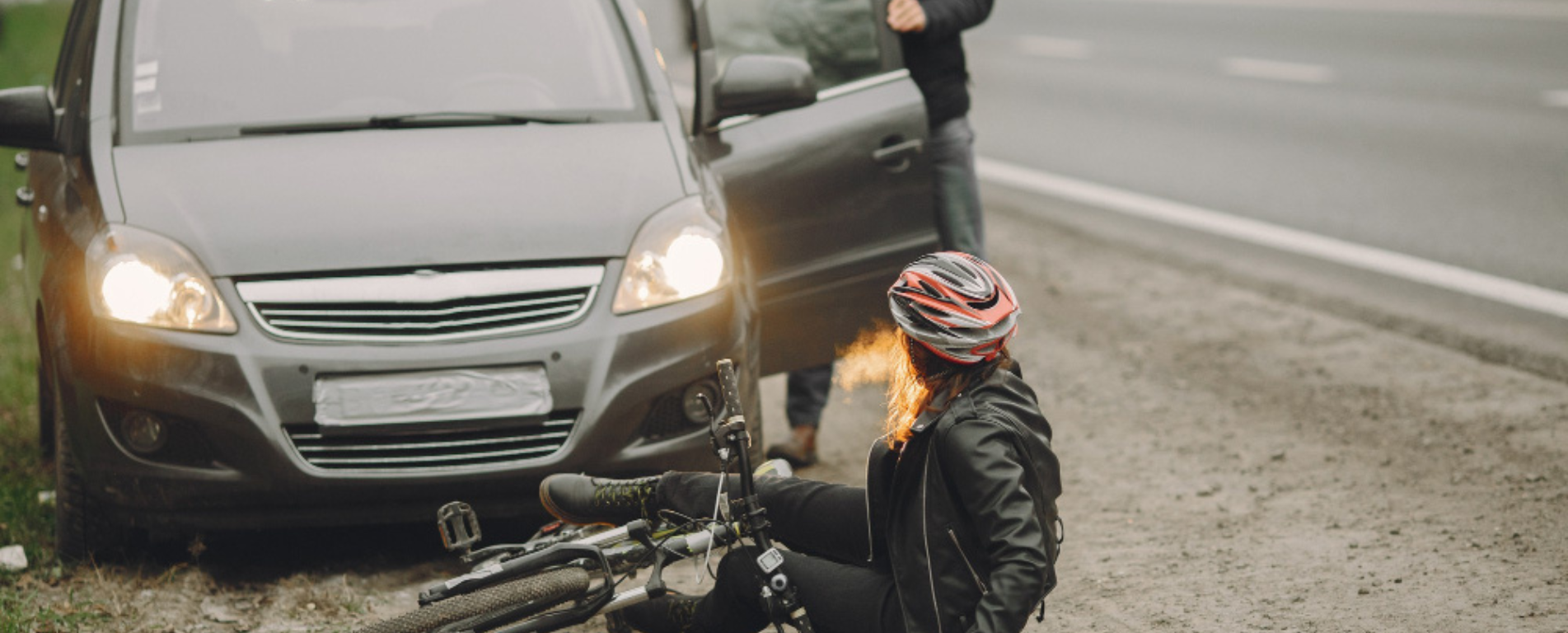Chicago is a city full of life—a lively and bustling city that boasts an attractive skyline, deep-dish pizza, and crowded roads. The pace of it is so frenetic. But of course, the chances are high that the number of traffic accidents may increase.
Throughout 2024, the city experienced a total of 112,000 car crashes alone, which have caused a staggering, extremely high, and record-breaking 25,692 injuries.
Even though it is always a good idea to be cautious when driving the streets of any major city, the other unfortunate truth is that a number of streets and crossings in Chicago.
Yes, you read that right! These dangerous areas in Chicago have become notorious for their frequent car crashes.
And do you know what the worst part about this is? The worst of all this is that the locations are always the same, and they continue to be repeated as hotspots of collisions.
Finding out where those areas are and why the area is so dangerous will make it possible to start speaking about safer driving that is beneficial to everybody.
In this article, I will focus on the sections of Chicago with the highest incidence of crashes, and I will talk about the real crash accidents.
I will also investigate particular streets and crossings in my findings, which are notorious for having many car crashes, and also the regular factors that are responsible for such types of happenings.
So, if this is something that you want to know, keep on reading till the end…
Chicago’s Riskiest Roads: By the Numbers

While city-wide efforts aim to improve road safety, recent data highlights persistent challenges.
The sheer volume of crashes remains high, and the number of injuries hit an all-time peak in 2024.
Information from the Chicago Data Portal and the Illinois Department of Transportation (IDOT) reveals specific roadways that demand extra caution:
Western Avenue
Stretching an impressive 23 miles through the city, it’s perhaps no surprise that Western Avenue consistently tops the charts for the highest number of total crashes – over 3,100 in 2024 alone.
Its length means it passes through incredibly diverse areas. This features everything from high-speed stretches to congested commercial zones and residential neighborhoods.
What does that do? Well, it creates a very wide variety of potential hazards and accidents.
Pulaski Road
While Western saw more crashes overall, Pulaski Road recorded a devastating combination of high injuries (723) and fatalities (5) from its 2,755 crashes in 2024.
Running through densely populated areas like Archer Heights and North Lawndale, it features numerous school zones and commercial centers.
This increases the risk of collisions involving not just vehicles, but also vulnerable pedestrians and cyclists.
Cicero Avenue
Connecting Midway Airport to major traffic arteries and industrial zones, Cicero Avenue (2,585 crashes in 2024) is often filled with drivers less familiar with Chicago’s layout or challenging weather conditions.
This mix of local, commercial, and tourist traffic, especially near highway interchanges like the Stevenson Expressway (I-55), contributes to its high accident rate.
Ashland Avenue
Cutting through the heart of Chicago and connecting diverse neighborhoods like Bridgeport, Wicker Park, and Rogers Park, Ashland Avenue saw over 2,450 crashes in 2024.
Its danger lies in the high volume of mixed traffic (cars, buses, bikes, pedestrians) often squeezed into narrow sections lined with parked cars and dedicated lanes, reducing the margin for error.
Halsted Street
Traversing dense neighborhoods including the South Loop, Halsted Street recorded nearly 2,100 crashes in 2024.
Significantly, it also saw 6 fatalities, making it one of the deadliest streets in the city that year. Like Ashland, it contends with heavy traffic in areas with significant pedestrian activity.
Zooming In: Notorious Intersections
Intersections are natural conflict points where vehicles, pedestrians, and cyclists cross paths. It’s estimated that around 40% of crashes nationwide occur at intersections.
However, in Chicago, that figure might be even higher, potentially accounting for a disproportionate share of serious injuries and fatalities.
Here are a few specific examples demanding heightened awareness:
E 79th St & S Stony Island Ave (South Side)
Based on data analysis from previous years (2018-2020), this intersection frequently ranked as the most dangerous in Chicago, recording nearly 200 crashes in that period.
Situated between Grand Crossing and South Shore, it handles immense traffic volume, and drivers navigating this crossroads must prioritize patience and adherence to right-of-way rules.
N Michigan Ave & E Wacker Dr (Downtown)
Nestled amidst the towering skyscrapers and bustling sidewalks of downtown, this intersection epitomizes the challenges of urban driving.
High volumes of vehicles, delivery trucks, rideshare cars, buses, pedestrians (many tourists potentially unfamiliar with traffic patterns), and cyclists all converge here. The sheer density and complexity make defensive driving essential.
Nearby, the Columbus Dr & E Wacker Dr intersection was tragically the city’s deadliest in 2022, highlighting the risks in this congested area.
N Milwaukee Ave / W North Ave / N Damen Ave (Wicker Park)
This infamous six-way intersection is a recipe for confusion. Three major streets converge, creating unpredictable traffic patterns.
The area is a popular hub for shopping, dining, pedestrians, and cyclists, adding layers of complexity.
Navigating this junction requires extreme vigilance, anticipating unexpected moves from other drivers, and being acutely aware of non-vehicular traffic.
Similar complex layouts, like the Diversey Ave / Elston Ave / Western Ave intersection, also pose significant risks.
Why Are These Areas So Prone to Accidents? Common Factors
The high crash rates in these specific areas aren’t random; they stem from a combination of factors:
Driver Behavior
This remains a primary cause. Reckless actions like speeding (a factor in nearly 40% of Illinois traffic deaths historically) and running red lights/stop signs contribute heavily.
Failure to yield the right-of-way and following too closely are consistently among the top reported causes of crashes.
Distracted driving (cell phones, in-vehicle tech) and driving under the influence continue to cause preventable tragedies.
Infrastructure & Environment
High traffic volume and congestion inherently increase risk. Poor road design, such as complex multi-leg intersections, inadequate sightlines, or lack of clear lane markings, breeds confusion.
Insufficient infrastructure, like poorly timed traffic signals, a lack of protected left-turn signals, unmarked crosswalks, or missing bike lanes, can fail to safely accommodate all road users.
Poor lighting (like on Lower Wacker Drive) and adverse weather (Chicago’s infamous snow, ice, and rain) exacerbate existing dangers.
Systemic Factors
Emerging analysis also suggests potential links between crash frequency and socioeconomic factors or historical disinvestment in infrastructure in certain neighborhoods, leading to areas with fewer traffic controls or worn road surfaces facing higher incident rates.
Staying Safe: Tips for Navigating Chicago Traffic
Even though certain factors are things that people cannot control, driving safely is one way of reducing the risk to a significant minimum:
Take Defensive Driving
Firstly, keep yourself informed of what is going on around you constantly. Feel free to think that other drivers could mess up. And yes, always maintain a distance that is safe enough (at least for 3-4 seconds).
Show More Awareness in Hotspots
Secondly, it is essential to exercise extra caution when crossing dangerous areas in Chicago.
Be alert when you go near those streets or their intersections that are widely recognized as dangerous.
Besides, you can be on the lookout for pedestrians, riders, and vehicles that are about to make a turn.
Remove All Distractions
Thirdly, store your phone in a place where you cannot hear or see it. Do not eat something, make a complex adjustment to the controls, or have an intense conversation while you are driving.
Keep to the Rules of the Road
Not only should you pay special attention to following the speed restrictions on every road, but you should also make a complete stop at stop signs and red lights.
Adjust to the Weather
Next on the list of the things you should do while passing the dangerous areas in Chicago is to pay attention.
Furthermore, you must lower the speed significantly when it rains, snows, ices, or fog arises. Increase the time gap between you and the vehicle in front and allow additional travel time.
Additionally, be very careful on the frosty bridges and overpasses.
Plan Your Journey
Whenever permitted, do not start your engines before getting to know the traffic conditions. And yes, please remember to avoid areas likely to have more accidents, especially during the peak of traffic flow.
Your Legal Guide: How to Navigate the Dangerous Areas in Chicago
Chicago is a dynamic city, but navigating its streets requires diligence. Drivers can increase their situational awareness by recognizing roads and intersections with historically higher accident rates, like the complex downtown or multi-way junctions
These include:
- Western Avenue.
- Pulaski Road.
- Stony Island Avenue.
- 79th Street.
Additionally, understanding the contributing factors, from reckless behavior to infrastructure challenges, empowers us to make safer choices.
However, when accidents do happen, having a knowledgeable Chicago personal injury lawyer can make all the difference in protecting your rights and securing the compensation you deserve.
Ultimately, prioritizing defensive driving, staying alert, and respecting traffic laws are crucial steps we can all take to protect ourselves and others on Chicago’s busy roadways. Drive safe, Chicago.
Read Also:
















